Some of the world’s most famous sinkholes are seemingly endless pits that swallow trees, cars and entire buildings.
Others fill with water, becoming popular swimming holes and offering unique photo opportunities. Discover some of the most famous sinkholes around the world!
In the strictly geological sense, sinkholes occur when water erodes solid bedrock, creating an underground cavity that collapses inward. However, the term can be used in a broader sense to describe any sudden slump of the Earth’s surface. Regardless of how you define them, these massive holes capture our curiosity with the mysteries of their bottomless depths.
1. Schmalkalden sinkhole, Germany
A giant crater some 20 metres deep has opened up in a residential area of an eastern German town, swallowing a car and parts of a garage, but causing no injuries. Emergency services were called to the scene in Schmalkalden on Monday night by a resident who reported hearing unusual noises. Six houses and 25 people were evacuated. Geologists say it wasn’t immediately clear why the ground gave way. Authorities filled the hole with gravel.
2. The speedway sinkhole, North Carolina, USA
A sinkhole formed in the infield of the Charlotte Motor Speedway in North Carolina in September 2010 when a 30-year-old drainpipe deteriorated 35 feet underground. The speedway was built atop an old landfill, and heavy rains contributed to the underground collapse.
2. The Guatemala City sinkhole, Guatemala
Huge sinkhole swallowed an entire intersection in Guatemala City over the weekend, gulping down a clothing factory but causing no deaths or injuries. Authorities say they are still investigating what caused the big hole. The giant 200ft-deep crater appeared after Guatemala was hit by tropical storm Agatha, bringing torrential rains and causing deadly mudslides.
4. The great blue hole – Belize
The Great Blue Hole is a large underwater sinkhole off the coast of Belize that’s more than 1,000 feet wide and 400 feet deep. It formed as a limestone cave system during the last ice age when sea levels were lower, and the caves flooded as the planet warmed and sea levels rose.
5. Cenote Ik Kil sinkhole – Yucatan, Mexico
Cenote Ik Kil (cenote means “natural well” in Spanish) is a large sinkhole on Mexico’s Yucatan Peninsula that’s sacred to the Mayans. The peninsula’s unique composition of porous limestone has resulted in several of these water-filled sinkholes, but Cenote Ik Kil is one of its most famous. The hole is 90 feet deep, adorned in tropical vegetation and filled with clear blue water that Mayan royalty used for both relaxation and ritual sacrifices.
6. The Great Ravenna Boulevard Sinkhole – Seattle, USA
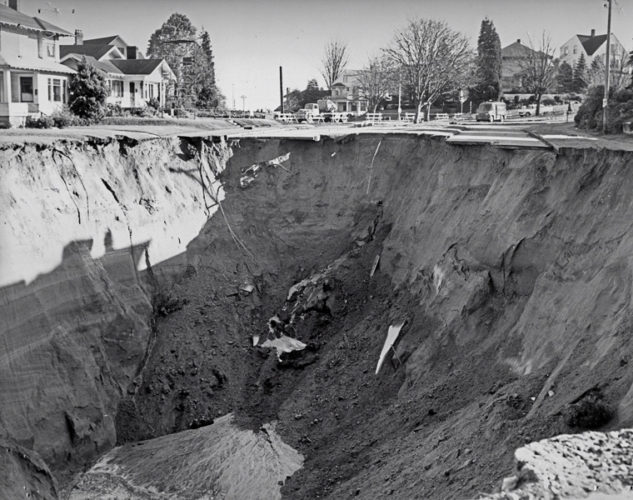
One of the largest and most expensive sewer collapses in the United States occurred on the night of Nov. 11, 1957, in Seattle. The sewer trunk collapsed 145 feet below the street, but the massive sinkhole that resulted was just 60 feet deep. Repairs took two years to complete.
7. The Picher sinkhole – Oklahoma, USA
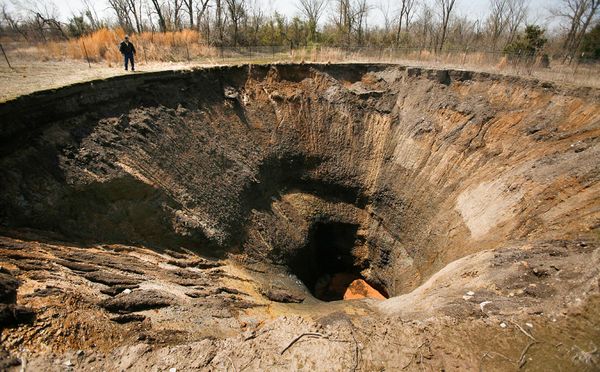
The EPA calls Picher, Okla., the “most toxic place in America,” and today the city is a modern a ghost town. Years of mining for lead and zinc has left the town full of sinkholes like this one. The roofs of some of the mines — unable to support the weight of the earth — collapsed, and now the former municipality is home to only giant chat piles and numerous massive sinkholes.
8. El Zacatón sinkhole – Tamaulipas, Mexico
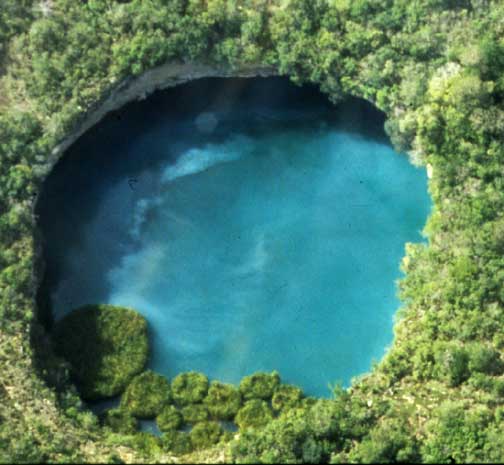
The El Zacatón sinkhole is the deepest water-filled sinkhole in the world. It was long considered to be bottomless, but in 1997 NASA solved the pit’s mystery when it sent an underwater robot into the waters and found the depth of El Zacatón to be 1,112 feet. The clear, blue water is highly mineralized and has a sulphurous odor, and it’s quite warm — averaging 86 degrees Fahrenheit. The sinkhole’s name comes from the free-floating islands of zacate grass that blow across the lake in the wind.
9. The Neversink Pit sinkhole – Alabama, USA
Neversink Pit is a limestone sinkhole in Alabama, and it’s one of the most-photographed sinkholes in the world because of its beautiful fern-covered ledges and waterfalls. The hole is about 40 feet wide at the top, but it expands to 100 feet at its bottom, which is 162 feet from the ground. Neversink is home to bats and several rare and endangered fern species.
10. Montezuma Well sinkhole – Arizona’s Montezuma National Monument Park, USA
Montezuma Well is located in Arizona’s Montezuma National Monument Park. The sinkhole was formed during prehistoric times when a limestone cavern collapsed, and today it’s 365 feet wide and 55 feet deep. Some 1.4 million gallons of water flow through the sinkhole each day from underground springs. The water of Montezuma Well is highly carbonated due to high levels of carbon dioxide, and the water contains very little oxygen and high levels of arsenic so it can’t support fish.
11. Devil’s Den sinkhole – Florida, USA
Devil’s Den is a fern-draped sinkhole in Williston, Fla., that is fed by underground springs. The water averages 72 degrees Fahrenheit, and on cold winter mornings, steam can be seen rising from the ground — thus, early settlers named the pit Devil’s Den. The sinkhole’s clear, warm water makes it a popular diving and snorkeling site, and visitors to the cave can see ancient rock formations, stalactites and fossil beds.





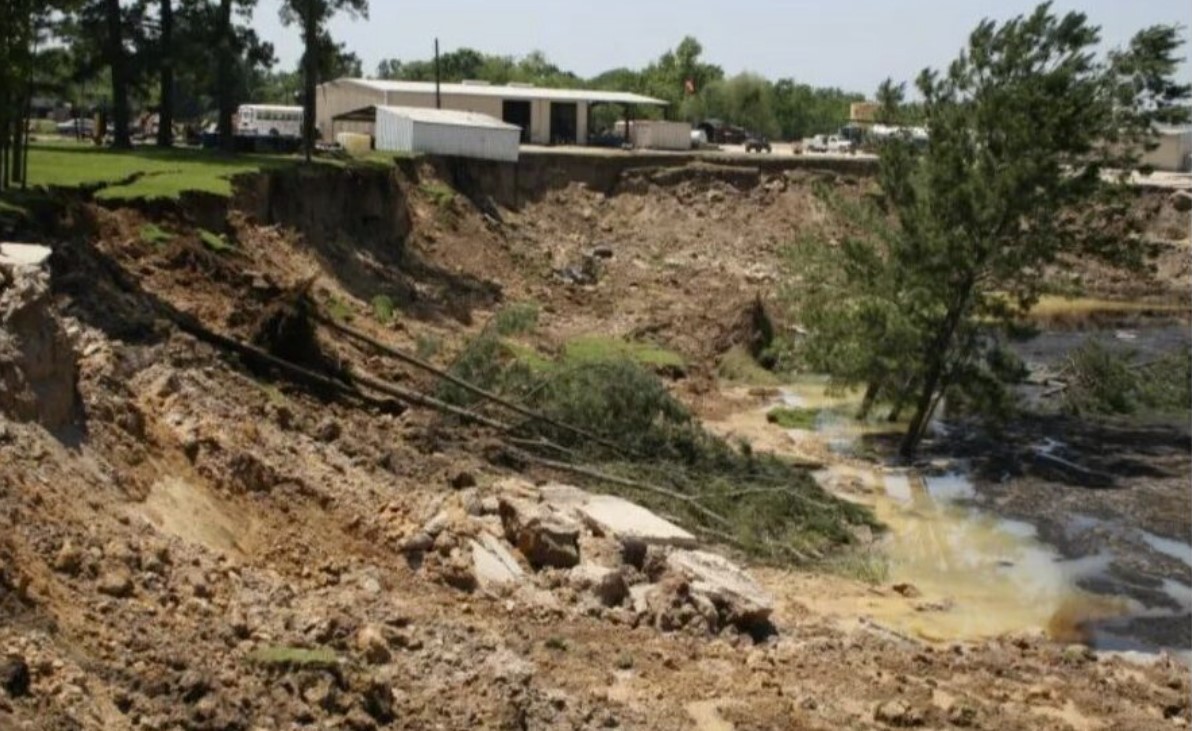


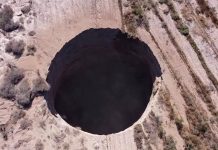

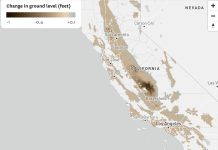


[…] Sinkholes are found all over the world. In the U.S., sinkholes are especially common in Texas, Alabama, Missouri, Kentucky, Tennessee, Pennsylvania, and Florida, according to the U.S. Geological Survey. Look at the most impressive sinkholes around the world here. […]